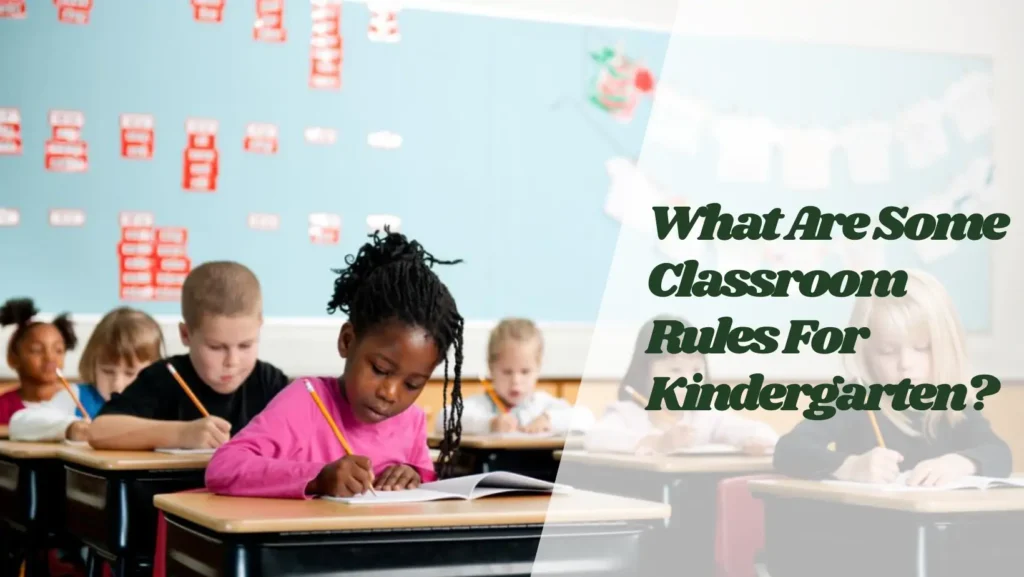Starting kindergarten is an exciting milestone for young learners, but it’s important to establish classroom rules to create a structured and supportive learning environment. In this article, we will explore some essential classroom rules for kindergarten that can help foster a positive and productive learning experience.
In my years of experience, I’ve learned that effective classroom rules for kindergarteners are simple, clear, and positively stated. They should foster respect, cooperation, and a sense of community. For instance, rules like ‘Use kind words,’ ‘Listen when others are speaking,’ and ‘Take care of our classroom supplies’ are easy for young children to understand and help build a nurturing and productive learning environment.
Additionally, rules related to safety can also be a top priority in a kindergarten classroom. This may include guidelines for walking in a single file, using gentle hands and cleaning up after oneself. By following classroom rules for kindergarten, students will feel safe and develop important habits and skills that contribute to their overall well-being.
Importance of Classroom Rules for Kindergarten
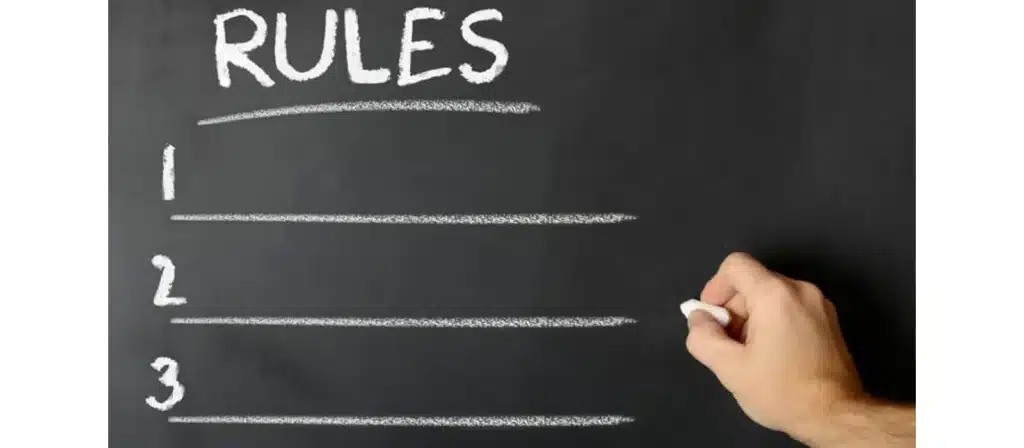
Kindergarten is often a child’s first experience with formal education. By establishing classroom rules for kindergarten, teachers provide a sense of structure that can help young learners navigate their new environment. Clear rules and expectations help children understand acceptable behavior and what is not. This structure gives students a sense of security and predictability.
Promoting Cooperation and Respect
Classroom rules for kindergarten often focus on promoting cooperation and respect among students. By setting expectations for behavior, teachers encourage children to work together, share, and take turns. These rules help foster a positive classroom culture where students learn to value each other’s ideas and feelings. By promoting cooperation and respect, classroom rules lay the foundation for positive social interactions and meaningful relationships.
Developing Responsibility
Classroom rules for kindergarten also play a crucial role in developing a sense of responsibility students. Rules related to cleaning up after oneself, taking care of classroom materials, and following instructions help children understand their role in maintaining a clean and organized learning environment. By instilling a sense of responsibility from an early age, teachers equip students with important life skills that will benefit them beyond the kindergarten years.
What is the Difference Between Classroom Rules for Kindergarten and Expectations?
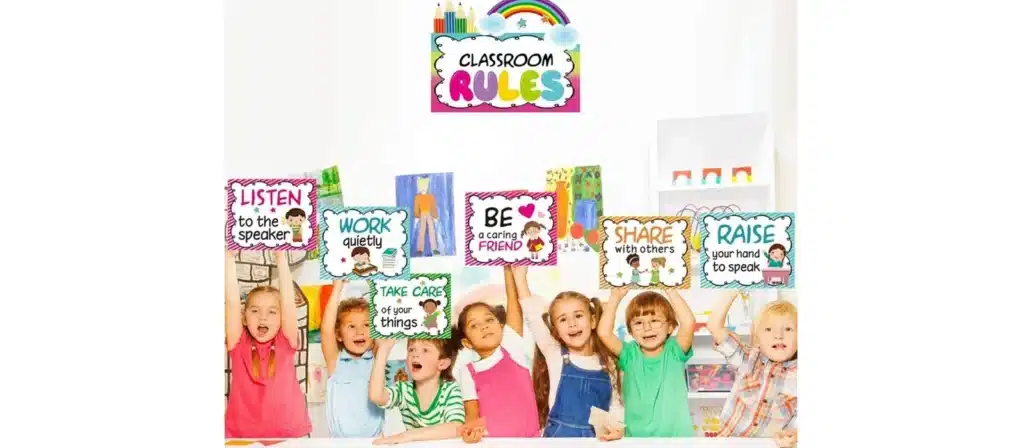
Though often used interchangeably, classroom rules for kindergarten and expectations have distinct roles in shaping a kindergarten environment. Rules are specific dos and don’ts governing student behavior, while expectations are broader goals for student conduct and learning attitude.
Establishing Clear Classroom Rules for Kindergarten
Clear classroom rules are concise, easy to understand, and directly address desired behaviors. They are the tangible guidelines that students are expected to follow. For example, rules like ‘Raise your hand to speak’ provide clear instructions on what is expected in the classroom.
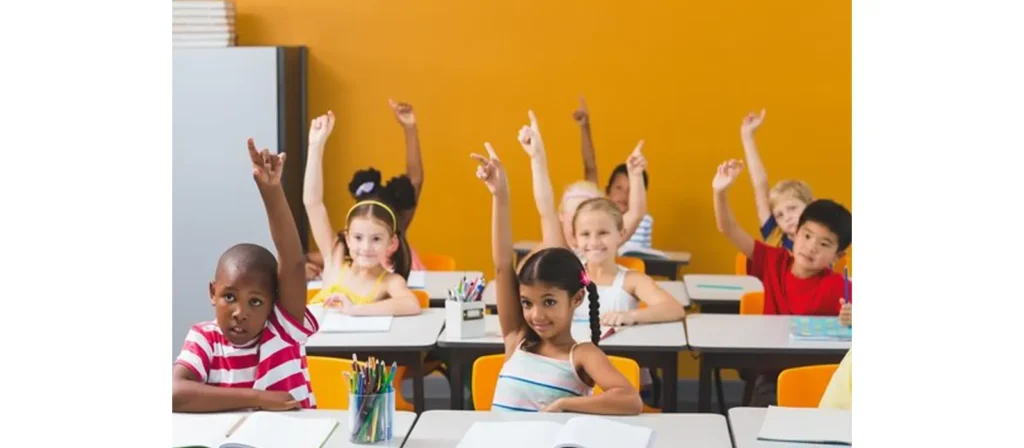
Defining Classroom Expectations
Classroom expectations are more about the ethos and attitude within the classroom. The overarching principles guide students’ approach to learning and interacting with others. Expectations like ‘Be a kind friend’ or ‘Always try your best’ set a positive tone for the classroom environment.
Balancing Classroom Rules for Kindergarten and Expectations
The key to effective classroom management is balancing rules and expectations. Rules provide structure, while expectations inspire students to reach higher standards of behavior and learning. Together, they create a comprehensive framework for a well-functioning kindergarten classroom.
How to Set Rules for Your Kindergarten Classroom?
Setting rules for a kindergarten classroom is essential for creating a structured and positive learning environment. Here are some steps and tips to consider when establishing classroom rules:
- Keep it Simple:
Young children need rules that are easy to understand and remember. Aim for five to seven clear, concise rules that cover the most important behaviors. Overloading children with too many rules can be overwhelming and counterproductive. - Focus on the Positive:
Instead of framing rules regarding what children shouldn’t do, focus on positive behaviors. For example, instead of “Don’t run,” use “Walk safely.” This approach encourages children to think about the behavior they want to see. - Involve the Class:
Involving children in the rule-making process gives them a sense of ownership and responsibility. Discussing why rules are important and letting children suggest rules can make them more likely to follow them. - Have Visual Cues:
Visual cues like charts, pictures, and posters can help reinforce rules. Young children often respond well to visual aids, which can serve as constant reminders of the expected behaviors. - Be Prepared to Adapt:
Classroom dynamics can change, and what works at the beginning of the year might need adjusting later. Be flexible and open to modifying rules to suit the class’s needs better. - Clarify Consequences for Breaking Rules:
Children need to understand what will happen if they break the rules. Consistent and fair consequences help reinforce the importance of following the rules and maintaining order in the classroom.
What Are Classroom Rules for Kindergarten?
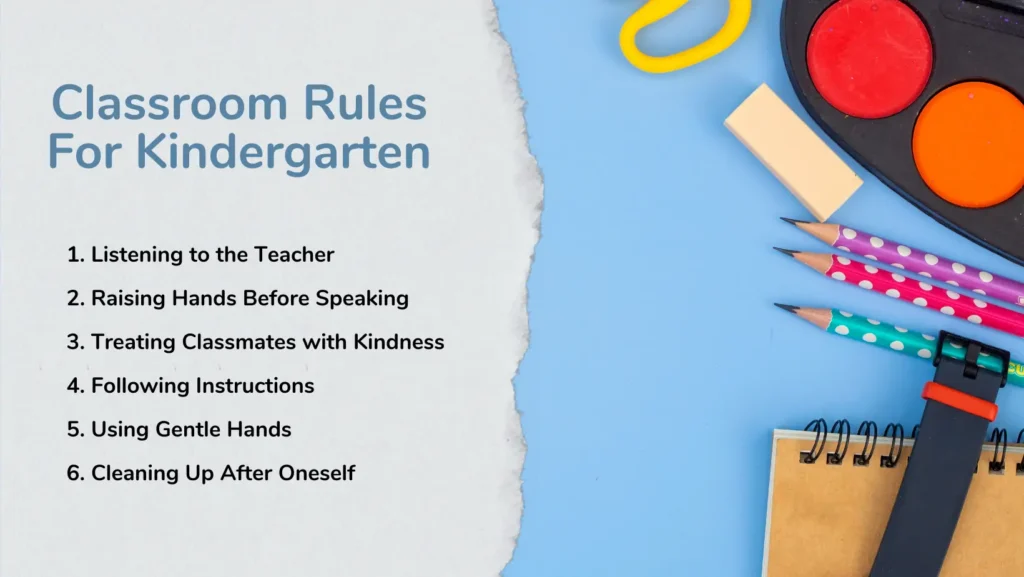
In the kindergarten classroom, classroom rules cover many behaviors and expectations essential to a successful kindergarten experience. Next, we will explore some classroom rules that can be implemented in kindergarten.
1. Listening to the Teacher
Classroom rules should emphasize the importance of attentive listening. Students should be encouraged to give their full attention to the teacher when instructions are given or during whole-class discussions. Students can better understand and engage in the learning process by actively listening.
2. Raising Hands Before Speaking
To promote respectful communication and ensure that everyone has a chance to contribute, it’s important to establish a rule where students raise their hands before speaking. This rule teaches children to take turns and wait for their opportunity to share their thoughts or ask questions. It also helps maintain order and prevents interruptions during instructional time.
3. Treating Classmates with Kindness
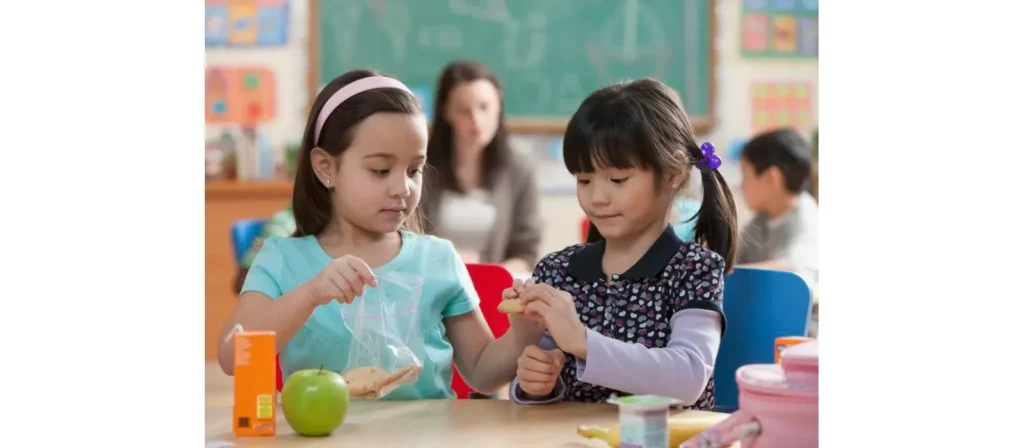
Kindergarten is when children learn important social skills, and treating classmates with kindness is a fundamental rule that should be reinforced. Students should be encouraged to use kind words, share, take turns, and help their peers. By promoting kindness, teachers create a positive classroom environment where students feel valued and supported.
4. Following Instructions
Following instructions is an essential life skill that students need to develop. Classroom rules should emphasize the importance of listening carefully and following directions from the teacher. By consistently reinforcing this rule, teachers help students develop self-discipline and the ability to complete tasks successfully.
5. Using Gentle Hands
Safety is a top priority in a kindergarten classroom, and using gentle hands is a rule that ensures a safe and respectful learning environment. Students must understand that physical aggression is unacceptable and that they should use gentle touches when interacting with their peers or handling classroom materials.
6. Cleaning Up After Oneself
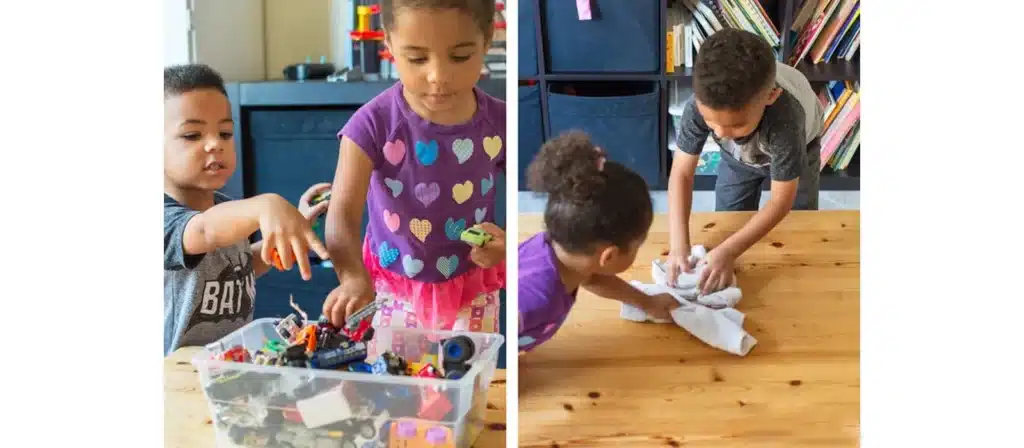
Teaching children to be responsible for their actions begins with simple tasks like cleaning up after themselves. Classroom rules for kindergarten should include expectations for tidying up personal belongings, returning materials to their designated places, and keeping the classroom clean and organized. By instilling a sense of responsibility for their environment, teachers help students develop good habits.
More Classroom Rules for Kindergarten
Whether you choose kindergarten classroom rules or make up your own, it’s always good to have some options! So, let’s look at some simple kindergarten classroom rules.
- Listen when others are talking.
- Keep your hands and feet to yourself.
- Use quiet voices.
- Put materials back when you are finished with them.
- Speak only one person at a time.
- Help each other.
- Use school supplies safely.
- Use polite and friendly words, such as “please” and “thank you”.
- Listen to the person who is talking.
- Keep tables or desks neat.
- Use walking feet in the hallways.
- Be punctual.
- Use your inside voice.
- Respect the personal space of others.
- Raise your hand before speaking.
- Ask permission to leave the classroom.
- Do not make fun.
Classroom Rules for Kindergarten – Ransitioning Between Activities

Transitioning between activities is common in a kindergarten classroom, and having clear rules in place can help streamline the process and maintain a productive learning environment.
- Listen for the Transition Signal:
To ensure that all students are aware of the upcoming transition, it’s important to establish a signal that indicates when it’s time to move on to the next activity. This signal can be a chime, a song, or a specific phrase. By actively listening for the transition signal, students are prepared for the change and can smoothly transition to the next activity. - Line Up Quietly:
When moving from one classroom area to another, students should line up quietly and orderly. This rule helps maintain order and prevents chaos during transitions. Teachers can model and practice the expected behavior, such as standing in a straight line and keeping their hands to themselves, to ensure students understand and follow this rule. - Use Transition Time Wisely:
Transitions can be a valuable opportunity for learning and practicing important skills. Teachers can establish a rule encouraging students to use transition time wisely, such as reciting the alphabet, counting, or engaging in a quick brain break activity. Teachers maximize instructional time and keep students engaged by making the most of transition time.
By implementing these rules for transitioning between activities, teachers can create a smooth and efficient learning environment where students are prepared for each new task or lesson.
Classroom Rules for Kindergarten – Listening and Following Instructions
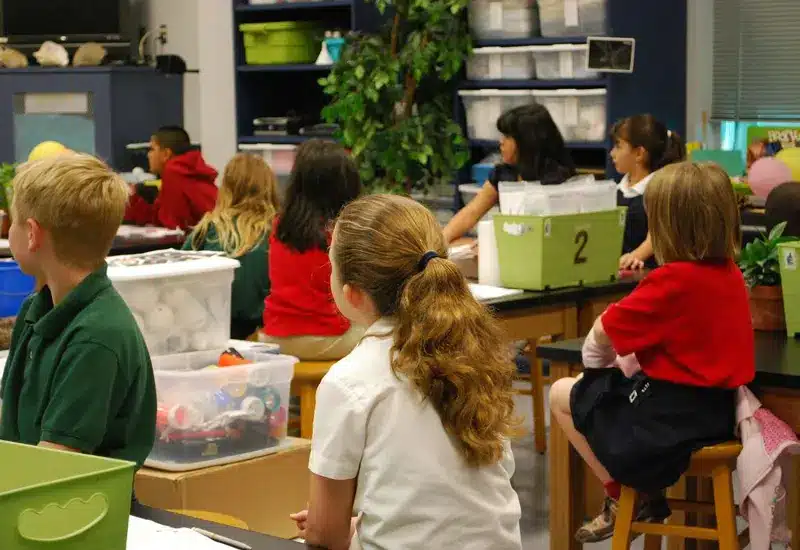
Listening and following instructions are essential skills that students need to develop to succeed academically and socially. Establishing rules that promote attentive listening and adherence to instructions in a kindergarten classroom helps create a focused and engaged learning environment.
- Eyes on the Speaker:
To ensure that students are actively listening, create classroom rules for kindergarten that encourage students to focus on the speaker. This rule helps minimize distractions and keeps students focused on the speaker, whether the teacher or a classmate. Teachers can mimic this behavior and provide gentle reminders to keep students engaged. - Raise Your Hand to Speak:
To promote respectful communication and prevent interruptions, students are asked to raise their hands if they have something to say. This rule teaches children to take turns and wait for an opportunity to participate in a discussion. By modeling and practicing these classroom rules for kindergarten, teachers create a classroom culture that values active listening and respectful communication. - Ask for Clarification:
At times, students may not fully understand the instructions given. Please encourage students to seek clarification when needed and allow them to ask questions when unsure what to do.
Classroom Rules for Kindergarten – Sharing and Taking Turns

Learning to share and take turns are important social skills students need to develop in kindergarten. By establishing rules that promote sharing and taking turns, teachers create a cooperative and inclusive learning environment where all students feel valued and included.
- Share Materials and Toys:
To foster a sense of community and cooperation, students should be encouraged to share classroom materials and toys. Emphasize the importance of taking turns and allowing others to use materials. Teachers can provide guidance and model appropriate sharing behaviors. - Wait for Your Turn:
A rule that emphasizes waiting for one’s turn is essential in promoting turn-taking and preventing conflicts. Students should understand that they must wait patiently for their opportunity to participate in an activity or use a particular resource. Teachers can facilitate this rule by providing visual cues, such as a designated waiting area, and praising students who demonstrate patience and respect for others. - Use Time-Timers:
Time-timers can be a helpful tool to visually represent the concept of turn-taking and sharing. Students can better understand and manage their waiting time by using a timer showing the turn duration. Teachers can introduce this rule by explaining how time-timers work and gradually increasing the turn duration as students become more familiar with the concept. - Use Kind Words and Gestures:
Effective sharing and turn-taking require students to use kind words and gestures when interacting with their peers. Saying “please” and “thank you” and using gentle touches. Teachers create a positive and inclusive classroom culture by promoting kindness in sharing and turn-taking.
Classroom Rules for Kindergarten – Using Classroom Materials and Supplies
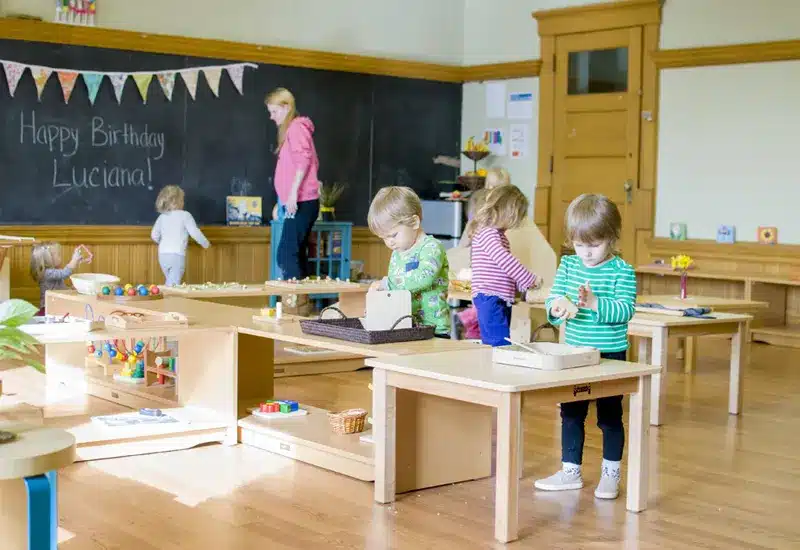
By establishing rules that promote proper use and care of materials, teachers help students develop a sense of responsibility and respect for their learning environment.
- Handle Materials with Care:
Students should be encouraged to handle classroom materials with care. Teachers can demonstrate the proper handling of materials and provide guidance when students need help. By reinforcing this rule, teachers promote a sense of ownership and respect for classroom resources. - Put Materials Back in their Designated Places:
Students should be encouraged to return materials to their designated places after use to maintain an organized learning environment. Students must clean up after themselves and return materials to their proper locations. Teachers can provide clear labels and visual cues to help students identify where materials belong. - Share Materials Equitably:
Students should understand the importance of sharing materials equitably with their peers. Ensure that everyone has access to what they need. Teachers can model and reinforce this rule by monitoring students’ interactions during activities and providing guidance when necessary.
Classroom Rules for Kindergarten – Personal Space and Behavior
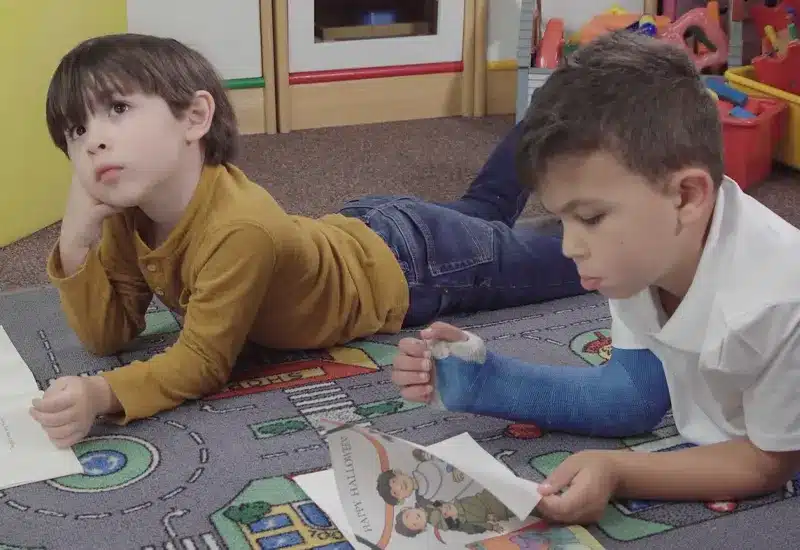
One of the fundamental aspects of creating a positive learning environment in a kindergarten classroom is establishing rules for personal space and behavior. This teaches children about boundaries and helps them develop self-control and respect for others.
- Respect Personal Space:
They should understand that everyone has their bubble and should be respected. Teachers can explain this concept to students using visual aids or role-playing activities. By respecting personal space, students learn to be mindful of others and develop a sense of empathy. - Keep Hands and Feet to Yourself:
Another crucial rule in a kindergarten classroom is to keep hands and feet to oneself. This rule helps prevent physical conflicts and ensures a safe learning environment. Teachers can emphasize the importance of this rule by explaining that physical contact should only be made with permission, such as during a high-five or a handshake. - Use Kind Words and Actions:
Kindergarten is an ideal time to teach children the importance of using kind words and actions. Teachers can encourage students to express themselves positively and respectfully, using phrases like “please” and “thank you.” Students should also be taught to avoid name-calling or using hurtful language.
Where Should Classroom Rules Be Placed?
Proper placement of classroom rules ensures that they are always visible and easily accessible to students. This visibility helps reinforce the rules and reminds children of the daily expectations.
Classroom rules should be placed in prominent, visible locations within the classroom. Ideal spots include near the door, at the front of the classroom, and eye level for children. This visibility ensures students can easily see and reference the rules, reinforcing their importance and helping them remember the expectations.
Having rules in clear view serves as a constant reminder for children, helping them internalize the guidelines and follow them consistently.
Use an Anchor Chart to Develop Kindergarten Classroom Rules
An anchor chart is a visual tool that supports learning and provides a reference for students. In the context of classroom rules, it serves as a collaborative way to establish and display expectations.
Using an anchor chart to develop kindergarten classroom rules involves creating a large, colorful chart with students. This interactive approach engages children in the rule-making process, helping them better understand and remember the rules. The chart can then be displayed prominently in the classroom as a constant reference.
Benefits of Having Kindergarten Classroom Rules
- Structure and Safety: Classroom rules provide children with a clear understanding of what is expected of them, helping to create a safe and orderly environment. This structure is essential for young children as it helps them feel secure and supported, enabling them to focus on learning.
- Social Skills Development: Rules teach children important social skills such as sharing, taking turns, and respecting others. These early lessons in empathy and cooperation are critical for their social and emotional development.
- Promotes Independence: By understanding and following rules, children learn to take responsibility for their actions. This encourages independence and self-discipline, which are important for their future academic and personal success.
- Enhances Learning Environment: A well-managed classroom with clear rules fosters a better learning environment. When children know the boundaries and expectations, disruptions are minimized, allowing for more effective teaching and learning.
- Respect for Authority: Classroom rules help children learn respect for authority figures, such as teachers and school administrators. This respect is crucial for their interaction with adults and authority figures later in life.
- Preparation for Future Education: By instilling the importance of rules and routines early on, children are better prepared for the expectations of higher grade levels. This foundational understanding helps ease transitions and adjustments to new educational environments.
- Conflict Resolution Skills: Classroom rules often include guidelines for resolving conflicts and teaching children how to solve problems peacefully and fairly. These skills are invaluable as they navigate their early social interactions.
- Encourages Inclusivity: When rules are applied uniformly, all children, regardless of background or ability, are held to the same standards. This fosters community and belonging, promoting an inclusive classroom environment.
How Do Teachers Communicate Classroom Rules for Kindergarten?
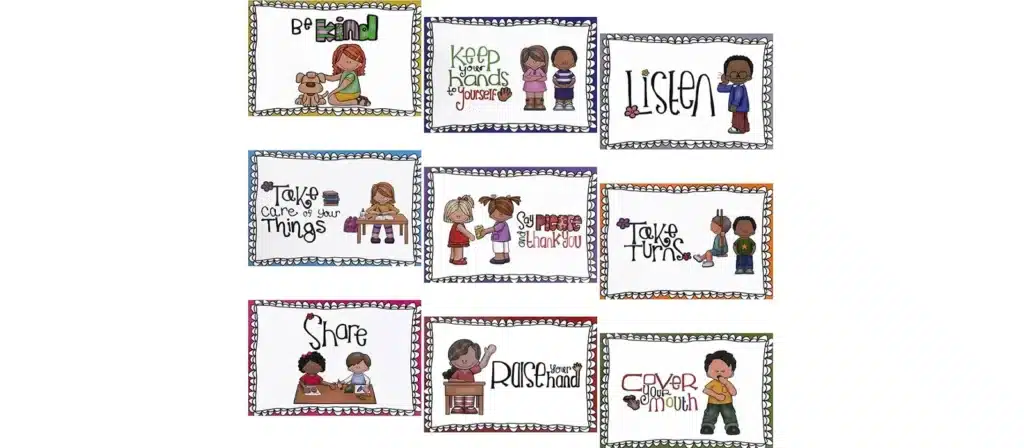
Communicating rules to kindergarteners is a skill that requires patience, creativity, and clarity. The most effective method is through the use of visual aids such as colorful charts, images, and symbols that represent each rule. These visual cues help children remember and understand the rules better.
Additionally, storytelling and role-playing can be powerful tools in conveying these rules. Children are likelier to engage and internalize the rules when participating in an interactive story or play. This method allows them to experience the consequences of following or breaking the rules in a controlled, safe environment.
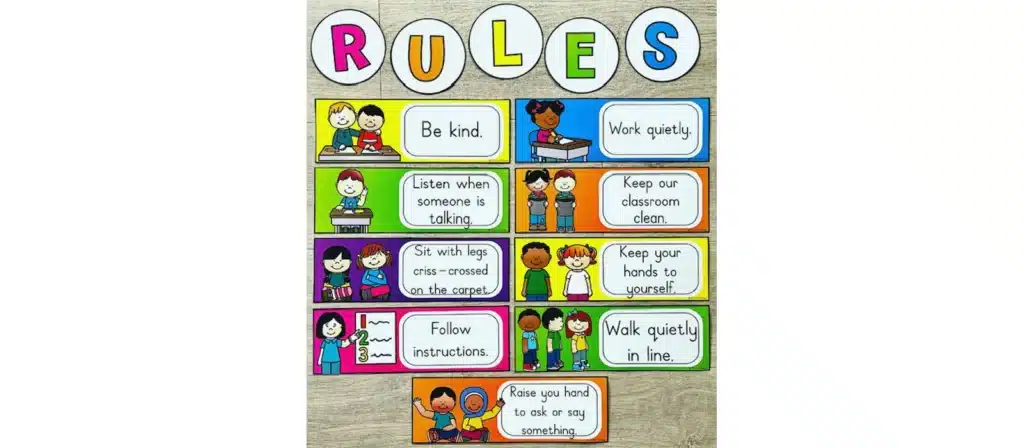
Regular discussions about the rules and their importance should also be part of the daily routine. This helps in reinforcing the rules and provides opportunities for children to ask questions and express their thoughts.
It is also essential for teachers to model the behavior they expect from their students. Children learn by observing adults, so when teachers consistently follow the same rules, it reinforces their importance and encourages children to do the same.
How Do I Reward Children for Following Classroom Rules?
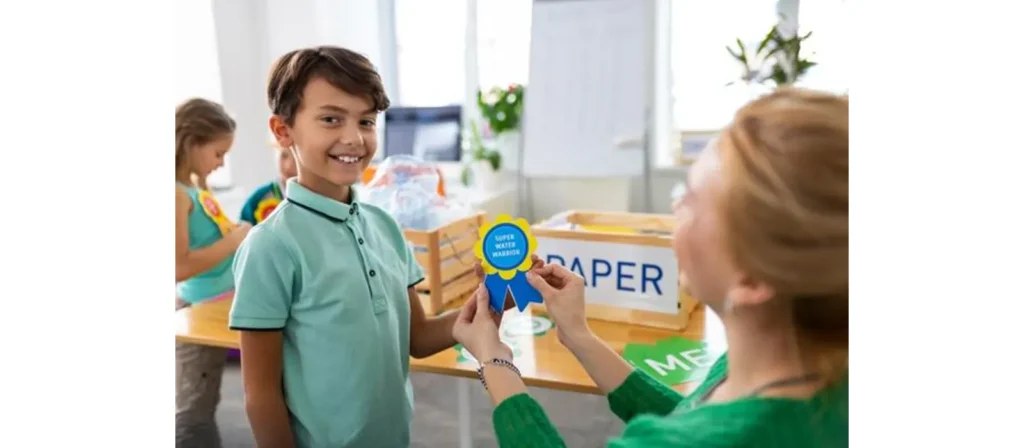
Rewarding children for following classroom rules is a powerful tool in reinforcing positive behavior. It motivates students and encourages them to adhere to the guidelines consistently. Rewards should be meaningful and aligned with the classroom’s goals and values.
A reward system can be highly effective, whether a sticker chart, a reward jar, or earning extra playtime. These systems should recognize individual and group accomplishments, fostering a sense of individual responsibility and teamwork.
Positive reinforcement goes beyond tangible rewards. Verbal praise, acknowledgment in front of peers, or a note to parents about their child’s good behavior are also impactful ways to reward adherence to classroom rules. This type of reinforcement boosts self-esteem and reinforces the desired behavior.
How do I Handle Kindergarten Classroom Infractions?
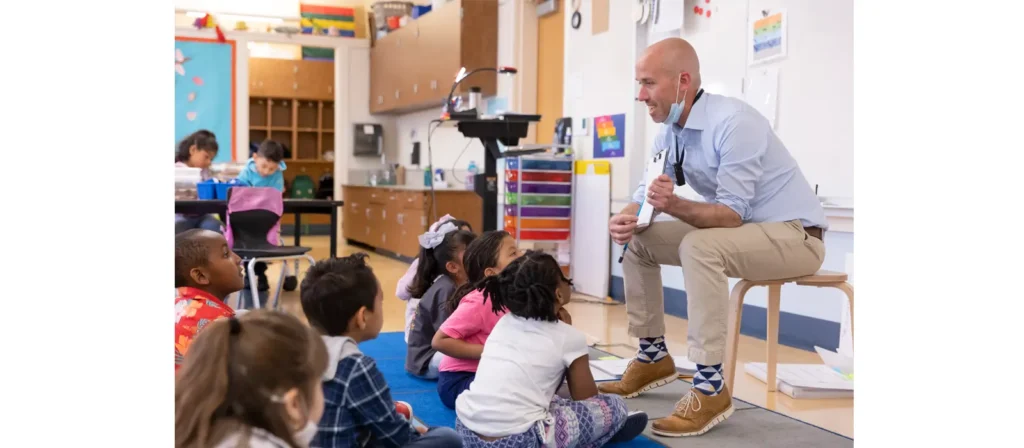
Handling infractions in a kindergarten classroom requires a delicate balance of firmness and understanding. The approach should be consistent, fair, and geared towards teaching rather than punishing. The goal is to help children learn from their mistakes and understand the importance of following rules.
Infractions should be seen as teachable moments. Discussing with the child why the rule is important and what they can do differently next time turns a negative incident into a learning opportunity. This approach fosters understanding and personal growth.
Consistency is key in handling infractions. All students should be aware of the consequences of breaking the rules. These consequences should be fair and directly related to the infraction. For instance, if a child makes a mess, having them help clean up is a relevant consequence.
Building a Supportive Community Among Educators and Parents
Regular communication with parents about classroom rules and their rationale ensures consistency between home and school. Workshops and meetings with parents can also help create a unified approach to discipline and rule adherence.
What Role Do Classroom Layout and Design Play in Classroom Rules for Kindergarten?

Don’t overlook the role of kindergarten classroom layout and design in enforcing rules. A well-organized classroom with clearly defined areas for different activities helps reduce chaos and confusion. This organization assists children in understanding where and when certain behaviors are appropriate.
For example, a cozy corner with soft furnishings can be designated for quiet activities like reading, signaling children that this is a space for calm and focus. On the other hand, an open area with durable, easy-to-clean surfaces and materials can be set aside for art and craft activities, where creativity and messiness are encouraged.
The placement of furniture and resources should also promote easy supervision by teachers. This helps quickly address any rule-breaking behaviors and ensure children’s safety at all times.
In addition, the classroom should be equipped with furniture and materials that are age-appropriate, safe, and accessible to all children. At Xiha Montessori, we understand the importance of this aspect and provide furniture that meets these criteria, supporting an environment conducive to learning and adherence to rules.
Conclusion
Classroom rules for kindergarten are the framework for a safe, respectful, and engaging learning environment. These rules promote cooperation, respect, and responsibility and teach important life skills such as empathy and self-control. By setting clear expectations and consistently reinforcing rules, teachers can help students develop positive habits and behaviors that will benefit them throughout their academic journey.
If you would like to know more about our nursery or if you would like to purchase or refurbish furniture for your nursery, please contact us. We are a kindergarten furniture manufacturer with 20 years of experience in the education industry, serving more than 2,000 kindergartens and educational institutions worldwide. We are a one-stop shop for all your needs.
Enforcing classroom rules also fosters a sense of security in students. Teachers ensure that students feel protected and valued by instilling guidelines for personal space, friendly words and behaviors, and other safety-related rules. Additionally, these rules help students develop essential skills such as empathy, teamwork, and self-control.

